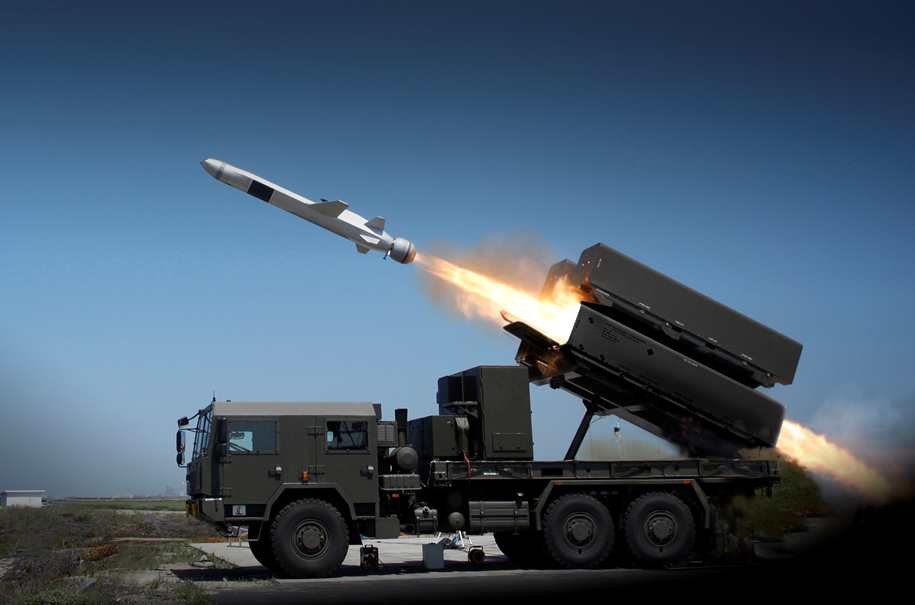- Reaction score
- 8,716
- Points
- 1,260
Nah we use to always take out the 60mm. Took up no room in a LAV, weighed piss all. Polar opposite of the C16.So at least it is following the example set by the 60mm MOR it replaced as an 'Armoury Queen'

Nah we use to always take out the 60mm. Took up no room in a LAV, weighed piss all. Polar opposite of the C16.So at least it is following the example set by the 60mm MOR it replaced as an 'Armoury Queen'
Isn't "formation" actually a technical term denoting Bde (X) Div (XX) or Corps (XXX), so the "Single Formation" would be the RCAC consolidated into a single co-located Bde consisting of y number of Armoured Regiments rather than having the regiments parcelled out across the CMBG's?Question to any members "in the know" regarding the following line item from the "Action" section on the Army's Force 2025 webpage:
By a "single formation" does this mean a single Regiment? It seems to suggest that when they talk about the objective being "to reduce national procurement".
Also, there has been lots of talk on this site about some of the trials, etc. being done to develop a Cavalry-like capability involving a mix of LAVs and TAPVs. Does that suggest they they are again looking at divesting the tanks and going to strictly Cavalry role for the RCAC? Or possibly reducing the number of tanks and integrating them into a mixed Cavalry Regiment?
Edited to add:
May have answered my own question. The most recent issue of the Canadian Army Journal has an article on Page 7 entitled "Armoured Corps Modernization: An Overview of the Cavalry Concept". It talks about an integration of the Tank and Recce streams in Armoured training and of Cavalry Regiments consisting of "Heavy Armoured Cav" Squadrons using the Leopard and "Light Armoured Cav" Squadrons using the LAV (or sub-optimally the TAPV).
So I'm wondering if for the Reg Force RCAC they're maybe looking at a single Cavalry Regiment with perhaps 2 x LAV Squadrons and 2 x Leopard Squadrons? That would certainly appear to take the "Heavy" (ABCT) role off the table for the Army going forward if so.
Until the protection level is tested by someone with RPGs, Semtex and other goodies arising in so called third/fourth nations.Given that it's designed as a MP's 'armoured squad car', it fits perfectly into the Peacekeeping narrative espoused by the current Liberal government.
An ambitious General, with an eye on promotion, might point that out and reconfigure the CAF accordingly

Until the protection level is tested by someone with RPGs, Semtex and other goodies arising in so called third/fourth nations.
More than a decade ago, the army had a plan to rebuild. It went nowhere
Canada is still standing in line for equipment it planned to buy 12 years ago
Murray Brewster · CBC News · Posted: Jan 07, 2023
Glad to see Gen (Ret'd) Leslie calling out the non-sense of the Canadian procurement and government bureaucracy that fucks around on procurement and equipping the forces.Not sure if this has been posted elsewhere but ... it was up briefly on CBC this morning and then slid to the back page.


According to a 2021 report from Norwegian engineering magazine Teknisk Ukeblad, the deal would pay for two coastal defense systems that would amount to four mobile launchers and two command and control nodes for the batteries.
The NSM was developed initially for the Royal Norwegian Navy as a modern anti-ship missile with a range of more than 100 nautical miles for its surface fleet. The ground-based launcher was developed by Kongsberg in part for export sales paired with a command and control system.
Raytheon was awarded a $208 million contract to arm Black Sea state and NATO member Romania with mobile coastal anti-ship missile batteries, the Pentagon announced in a Thursday contract statement.
Working with the Norwegian company Kongsberg, Raytheon will provide Romania an unspecified number of Naval Strike Missile Coastal Defense Systems as part of the deal that could be worth up to $217 million after all the options are exercised, according to the announcement. The bulk of the work will be done in Norway and at Raytheon’s facility in Tucson, Ariz., reads the statement.
The late 2022 DSTL magazine, The Science Inside, also described their work on the Deep Fires Rocket System.
Deep Fires Rocket Systems: A single platform with multiple effectors, capable of independent precision targeting of threats out to 150km. Dstl is working with industry to develop a missile to engage high value, time sensitive moving targets (Land Precision Strike) and a dispensing rocket payload that provides target acquisition, kinetic and non-kinetic effect against multiple dispersed targets (long range area effect).
Further details on Land Precision Strike missile was provided in a separate document sent to the Defence Select Committee;
The Land Precision Strike (LPS) Project is developing momentum fast; it will be fired from the upgraded MLRS to leverage investment in that platform, achieve efficiencies, and deliver the vision of ‘One Launcher, Many Payloads’. This will be a transformational capability from 2028 to counter mobile, fleeting, armoured, and high value threats out to at least 80km.
The In-Service Guided/Multiple Launch Rocket System (G/MLRS) upgrade programmes will consist of…
- Upgrades to 44 M270B1 launch vehicles, including a new armoured cab, composite rubber tracks, and upgraded automotive and launch mechanism components,
- A new Fire Control System will be developed collaboratively with the US, UK, Italy, and Finland,
- An ability to fire the Guided MLRS Extended Range (GMLRS-ER), providing a 150km capability,
- An ability to fire the Precision Strike Missile (PrSM), providing a 499km capability.
Why Land Precision Strike?
GMLRS and ER-GMLRS are no doubt extremely effective munitions, with the former well proven in multiple conflicts. The IM-compliant M31A1 GMLRS rocket is 3.94m long, 227mm in diameter and weighs 302kg. Of that 302kg, 90kg is the single blast fragmentation warhead.
This single warhead is excellent against buildings or other fixed infrastructure, and clusters of vehicles, but its area effects are limited. The Alternative Warhead provides these area effects by using 160,000 preformed tungsten fragments. A version using larger tungsten balls is also under development for the US Army.
Even though GMLRS has been called the 70km sniper, it is a blunt weapon.
GMLRS cannot be used against moving targets because it only has a GPS/INS guidance system, and in some scenarios, the minimum range of 15km might also be a problem.
GMLRS cannot be easily fired from naval vessels (although it has been demonstrated) and is limited against reverse slope targets.
The large warhead might also be limiting in many situations.
Perhaps an easy way to understand the requirement is to visualise an 80km Brimstone.
Land Precision Strike (and GMLRS/ER-GMLRS) are fundamental components of the British Army’s new Deep Reconnaissance Strike Brigade Combat Team.
Future Soldier describes DRS as;
1st Deep Recce Strike BCT will focus on the Army’s deep fight, combining deep fires with reconnaissance and the ability to integrate non-lethal effects. Deep Recce Strike BCT combines the Ajax’s formidable sensors with enhanced fires systems to provide long-range persistent surveillance for the coordination of deep fires.
It is fair to say that DRS is still a work in progress, but the building blocks are beginning to form, and the Land Precision Strike missile will be fundamental part of its development.

@Kirkhill that seems to be a 1st Quarter 2022 paper (or early 2nd) the UK MoD has changed a few directions since then FWIW.
Not sure about fully OS, last Nov a Brit Col was doing a FOUO Unclass brief in Ft Benning, I didn’t find it that exciting and didn’t stay past the first 10 min, but it was a Sept dated brief. My guess is that will migrate to OS soon if not already - I just don’t generally surf UK MoD stuff.View attachment 75803
The previous posts came from a document referred to under the Think Defence Deep Fires post above.
The give a good idea of the direction of travel of the British Arrmy and the Royal Artillery.
That's interesting - yes it was a May 22 doc. Anything OS more current?
This oneNot sure about fully OS, last Nov a Brit Col was doing a FOUO Unclass brief in Ft Benning, I didn’t find it that exciting and didn’t stay past the first 10 min, but it was a Sept dated brief. My guess is that will migrate to OS soon if not already - I just don’t generally surf UK MoD stuff.
The Uk however views the Challenger 3 upgrade as in interim armor and will be joining the EU (Franco-German) next gen Tank program this year (I don’t recall its moniker).
Main Ground Combat System - Wikipedia
en.wikipedia.org
MGCS – The Smart Tank is Rolling in | HENSOLDT
MGCS (Main Ground Combat System) is a project by France and Germany for a new state-of-the-art tank. HENSOLDT strives to develop the game-changing networked sensor solution for MGCS. The goal: Offering the crew an automated situation analysis in real time with the support of AI.www.hensoldt.net
Nearly every other Army has the same overlap because no one system can do it all.I was kind of taken by the breadth of the British effort. Not the benefits of a particular system but the number of systems, their modifications and their overlaps.
And a sense that 80 km is the new 8 km.
armies will still require forces to maneuver to seize positions of advantage from which to employ systems of choice (fires systems or otherwise). Therefore, mechanized maneuver forces will remain a critical requirement. The question then becomes how best to organize, train, and equip mechanized forces to increase their survivability on the modern battlefield and adjust their role to support fires better, not whether mechanized maneuver forces are becoming obsolete. Therefore, as the Army continues modernizing its equipment, organization, and doctrine, it must assess whether fires will continue to enable maneuver or give way to a fires-centric force enabled by maneuver.
- First, the battlefield is becoming increasingly transparent, exposing armored vehicles to advanced fires weaponry, and limiting any sanctuary that a mechanized formation might need to conduct logistics operations like refueling or resupplying. Consequently, the democratization of intelligence—assets and information—will dramatically improve friendly and enemy targeting capabilities from the tactical to the theater-strategic levels of war.
- Second, precision munitions are no longer relegated to only a few select nations or high-priority missions. Instead, precision munitions—both to grid location and target guided—are becoming commonplace and will continue to proliferate, endangering any target that a belligerent deems high value.
- Third, improvements in man-portable systems have increased the destructive capacity of dismounted forces in both the close and deep fights. Hard to detect small infantry squads dispersed around a battlefield with anti-tank missiles and loitering munitions can mass effects against convoys, ammunition holding areas, bulk fuel areas, or other critical targets essential for mechanized warfare.

